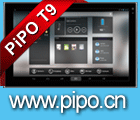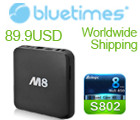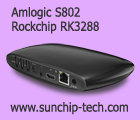25 programmers in the bus, 72 hours, 2700km, 6 startup ideas actually realized and working. They traveled from Holland to Copenhagen, to Zurich and to Paris to be at LeWeb 2011, check this video to hear about some of the startups they have been able to brainstorm and actually develop to show as working prototype.
Live head-mounted video from Le Web 2011
I’m streaming now with a camera on the Motorola Kopin Golden-i from Leweb 2011, I’ll ask questions from the IRC chat:
Spotify launches Spotify Radio
Here at LeWeb 2011, Daniel Ek, CEO and founder of Spotify, announces the launch of the Spotify Radio music recommendations engine. How does it compare with the music recommendations algorithms of Last.fm, Pandora and other?
Yves Behar at LeWeb 2011
Interview with Yves Behar, the designer of the OLPC XO-1, about design, about technology, business, non-profit, consumer electronics design philosophy.
Salesforce.com at LeWeb 2011
JP Rangaswami talks about some of Salesforce.com’s work with social media for the enterprise.
Bill Gross at LeWeb 2011
Here’s my interview with him talking about the tech industry. You can watch his whole keynote video here: http://youtube.com/watch?v=gSqQPgwhYuM
Marissa Mayer at LeWeb 2011
She didn’t want to let me interview her, but I recorded a bit from her discussion on stage with the Apple fanboy MG Siegler. You can watch the whole video on the official LeWeb Youtube channel here: http://youtube.com/watch?v=tIYfnMx8CMM
Renault’s role in web technology, encouraging Android app ecosystem for the car and more
Matthieu Tenenbaum talks about some of the things they Renault is doing to encourage more technological integration in the car.
Google Analytics Interview: Bringing accountability to Social Media
Google is launching this new tool to measure the value of social media. Read more about it here: https://code.google.com/apis/analytics/docs/socialData/home.html
Windows Phone 7.5 at LeWeb 2011
Microsoft is presenting the Windows Phone series, now made by Nokia, HTC and Samsung. They are doing a big marketing push in Europe, I don’t know how many they are selling.
Archos 101 G9 Turbo 1.5Ghz OMAP4460
This is the first demonstration of the 1.5Ghz OMAP4460 running in a fully optimized Honeycomb Tablet. Archos is releasing the Turbo 1.5Ghz in January 2012 worldwide starting at $399 MSRP (actual retail price may be as low as $369 I guess, based on the 1Ghz Archos 101 G9 being now sold for $339 and the 1Ghz Archos 80 G9 being sold at $269.) The price difference between the 1Ghz and 1.5Ghz Archos G9 tablets is supposed to be about $30.
Test driving the Renault Twizy Electric Car
This is an awesome compact electric car, safer than a motorbike, smaller than a car, it’s being sold at around 7000 euros (first deliveries to happen before March 2012), it’s smooth and fast to drive around with, range is enough for most city driving use.
Samsung Galaxy Nexus presented by Ulrich Rozier of Frandroid.com
Here at the Renault Atelier on the Champs Elysee in Paris, Ulrich Rozier of Frandroid.com presents his awesome phone, the Samsung Galaxy Nexus, the Ice Cream Sandwich reference device, for sure the best phone in the world.
Live from Google Workshop: Google Analytics: Bringing accountability to Social Media
Google is launching this new tool to measure the value of social media. This is a very interesting workshop. I am broadcasting it live now from a webcam on my head:
Find more clips at: http://www.ustream.tv/channel/leweb-2011
There is more information at: http://www.google.com/analytics/developers/socialhub.html
Ice Cream Sandwich preview on Archos G9
Archos is showing a preview of Android 4.0.1 Ice Cream Sandwich running on the OMAP4 based Archos G9 tablets to be finalized during Q1 of 2012. They still have to finish the hardware acceleration for video support, Samba/Upnp, 3G stick support and all of the other specific features that Archos provides on top of Android.
Archos Home Connect
$129 Android webradio alarm clock, this can be a nice to have next to your bed. It can wake you up with your Google Music playlists, with your Spotify favorites, with your Pandora, Last.fm, you can use Tune In webradio tuner. It can display trafic informations on a map for your region, show you news healines, pull RSS feed items etc.
Archos Smart Home Phone
This is perhaps the coolest landline dect phone, because it runs Android, supports not only landline calling functionality, it can integrate with Skype, SIP, Google Voice and more over the WiFi at home and each set costs $149, you can have up to 5 of them running on the same dect network in your home.
Ice Cream Sandwich running on the ZiiLABS ZMS-20 based JAGUAR reference tablet
ZiiLABS uploaded this “Special Preview” video showing Android 4.0 Ice Cream Sandwich running on the 1.5Ghz ZMS-20 ARM Cortex-A9 JAGUAR reference tablet, highlighting the new UI transitions, photo-browser, OpenGL and gaming.
You can find more information about the ZMS-20 processor at ziilabs.com
Samsung announces Exynos 5250, ARM Cortex-A15
Here is the press release:
[SEOUL] Nov 30, 2011 – Samsung Electronics Co., Ltd., a world leader in advanced semiconductor solutions, announced today the industry’s first dual-core processor samples based on the ARM™ Cortex-A15 core. Designed specifically for high-end tablets, Samsung’s newest 2GHz dual-core Exynos 5250 utilizes 32nm high-k metal gate low-power process technology and will offer system-level designers an exciting new solution intended to meet the graphic-intensive, power-efficient requirements of these next-generation mobile products.
“The ARM Cortex-A15 brings unparalleled performance to our Exynos processor family and the exploding mobile marketplace,” said Dojun Rhee, vice president of System LSI marketing, Device Solutions, Samsung Electronics. “Designers need an application processor platform that delivers full high definition multimedia capabilities, fast processing speed and high performance graphics to meet end users’ expectation for a connected life on the go. The advanced low-power, high-performance processor technology of the new Exynos 5250 continues to deliver an unprecedented level of performance for users to enjoy a completely new mobile experience.”
Samsung’s new dual-core ARM Cortex-A15 based application processor, the Exynos 5250, is capable of processing 14 billion instructions per second (DMIPS, Dhrystone million instructions per second) at 2.0GHz, nearly doubling the performance over a current state of the art Cortex-A9-based dual core processor running at 1.5GHz capable of 7,500 DMIPS.
In particular, the Exynos 5250 design was architected to drive up to an industry leading 2560 x 1600 (WQXGA) display which reflects the significance of advanced display technology transitioning toward ever higher and sharper resolutions. These leading-edge features enable users to enjoy crisper video images on their mobile devices and deliver readability equivalent to real paper for an ultimate electronic reading experience.
To maximize power efficiencies at the system level, the Exynos 5250 has an embedded DisplayPort (eDP) interface that is compliant with panel self-refresh technology (PSR) applied to the timing controller (T-CON). The embedded PSR technology enables static images to be refreshed directly from the frame buffer memory incorporated in the T-CON, resolving the need for regular display refresh instructions to be made by the application processor in cases such as reading static web pages or e-books.
The 3D graphics processing capabilities, enhanced by more than four-fold over the 1.5GHz Cortex-A9 dual-core processor, and a stereoscopic 3D feature raise the bar of user experience on high-specification 3D gaming, user-interfacing and stereoscopic 3D video playback.
Moreover, the Exynos 5250 features a doubled memory bandwidth of 12.8 Gigabytes per second (GB/s) compared to current dual-core processors that support a maximum of 6.4GB/s to enable fast data processing features, superb 3D graphics and high-resolution display. This memory bandwidth is a key requirement for a processor to support WQXGA resolution displays.
Samsung’s Exynos 5250 offers a host of peripheral functions including an embedded image signal processor enabling 8 Megapixel resolution images at 30 frames per second, a full HD 60 frame per second video hardware codec engine for high resolution 1080p video recording and playback, a HDMI 1.4 interface for sharp and crisp multimedia content transmission, along with a diverse scope of embedded booting device interfaces such as SATA, UART, USB and external ports such as USB3.0, eMMC4.5 and eSD3.0.
The Exynos 5250 is currently sampling to customers and is scheduled for mass-production in the second quarter of 2012.



